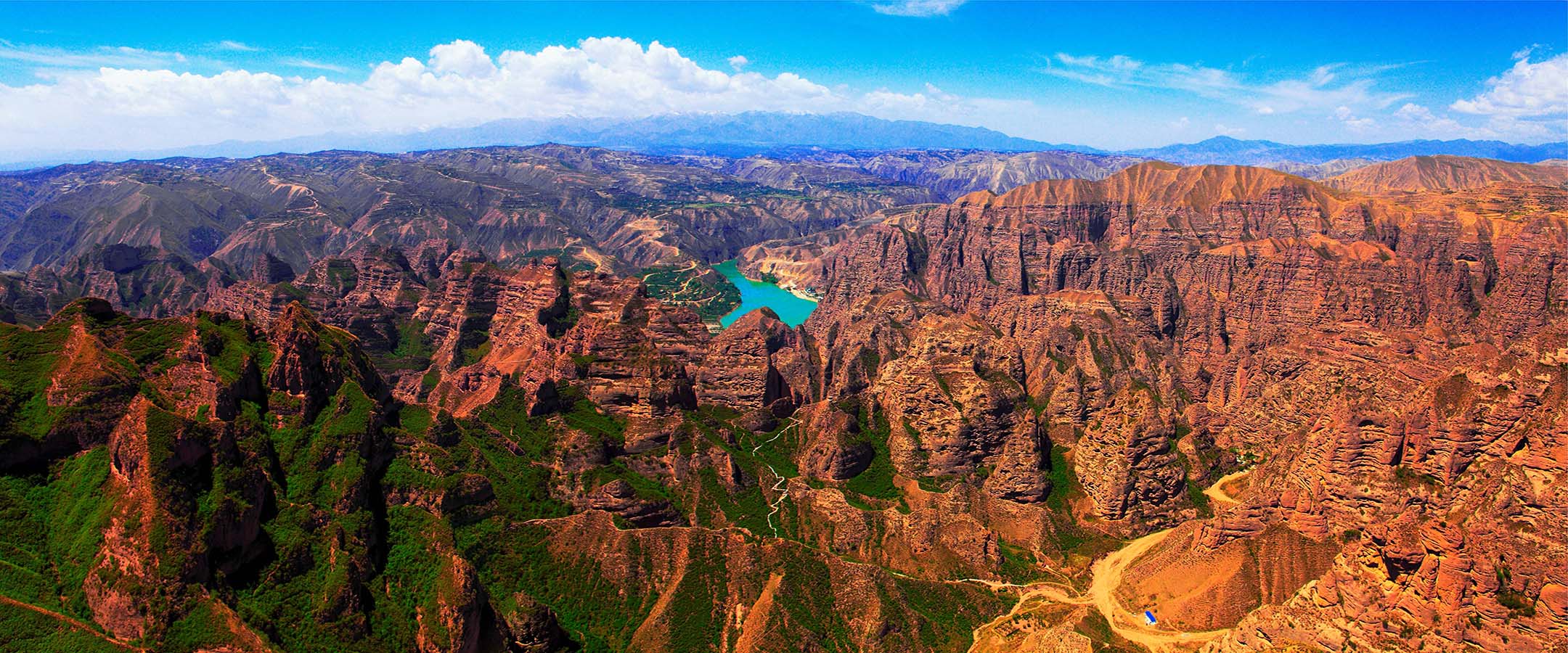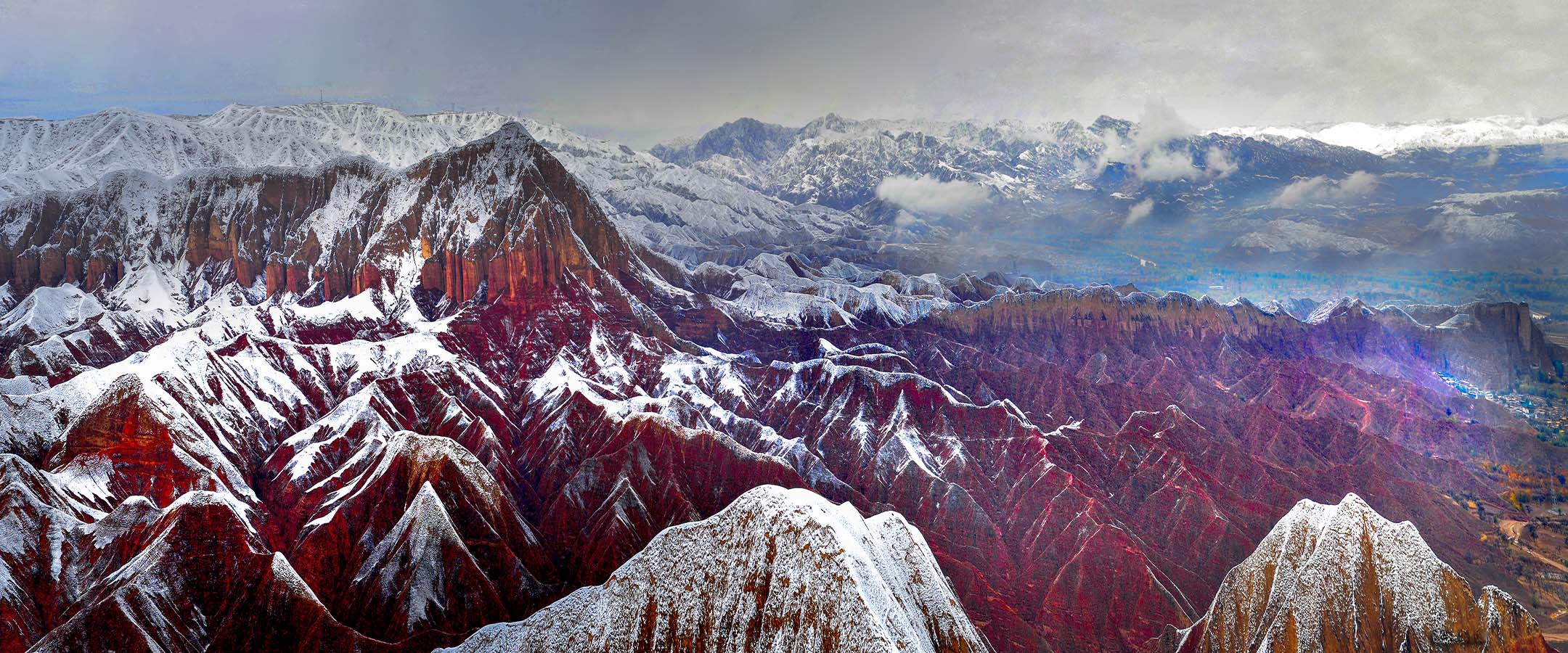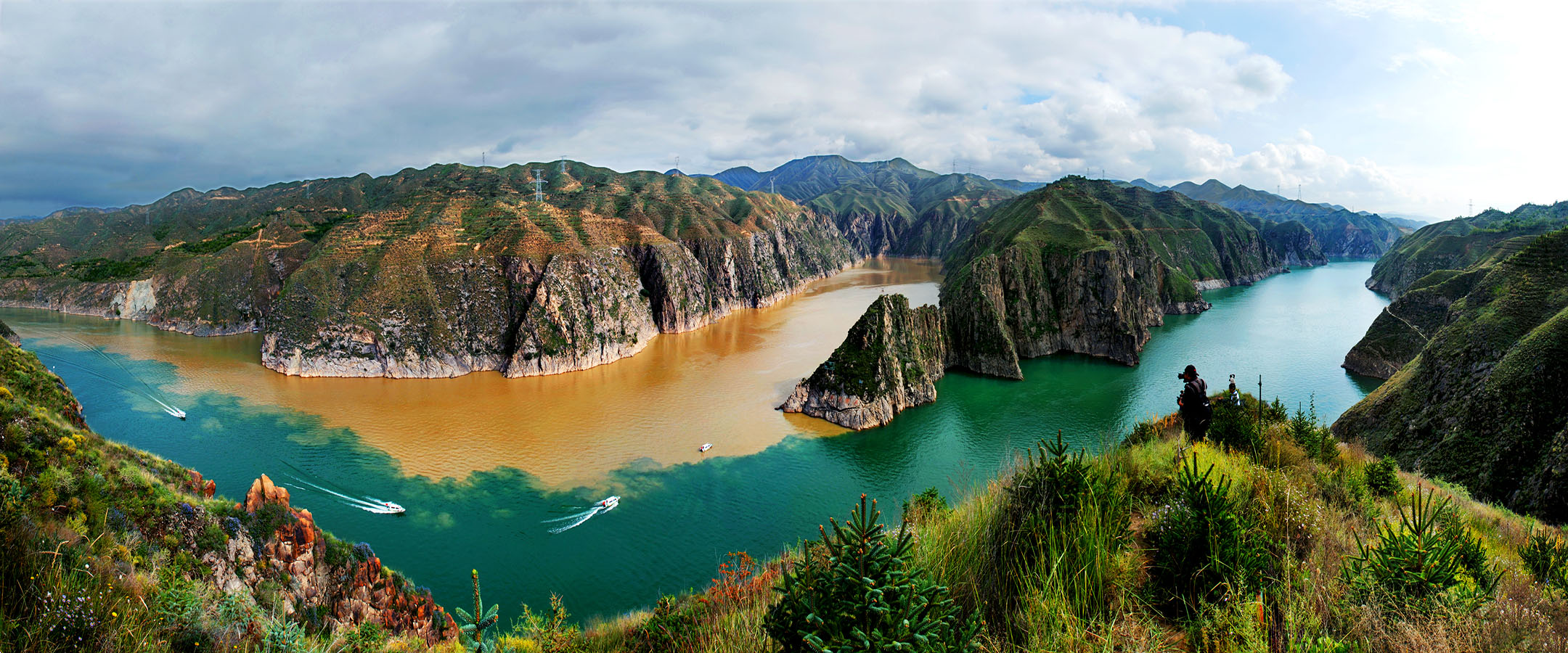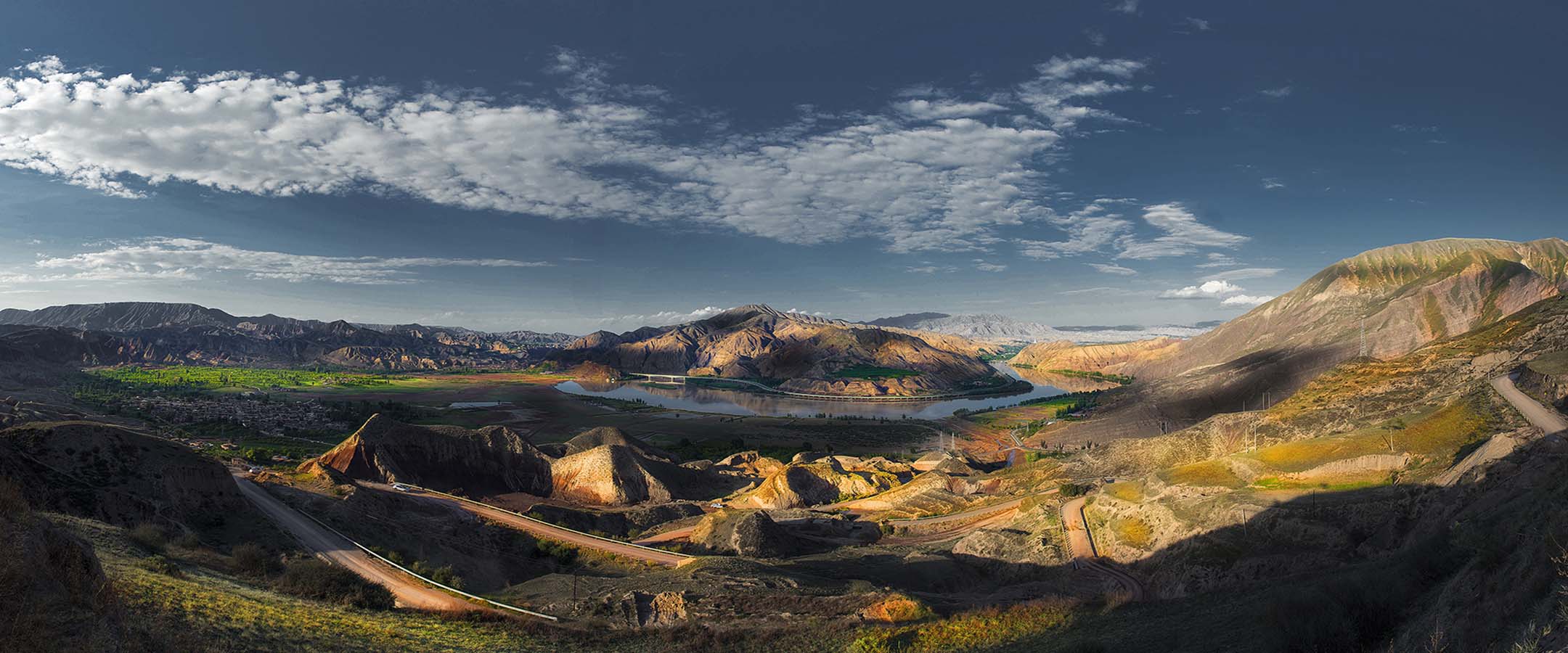公园整体地质概述
General geological description of the aUGGp
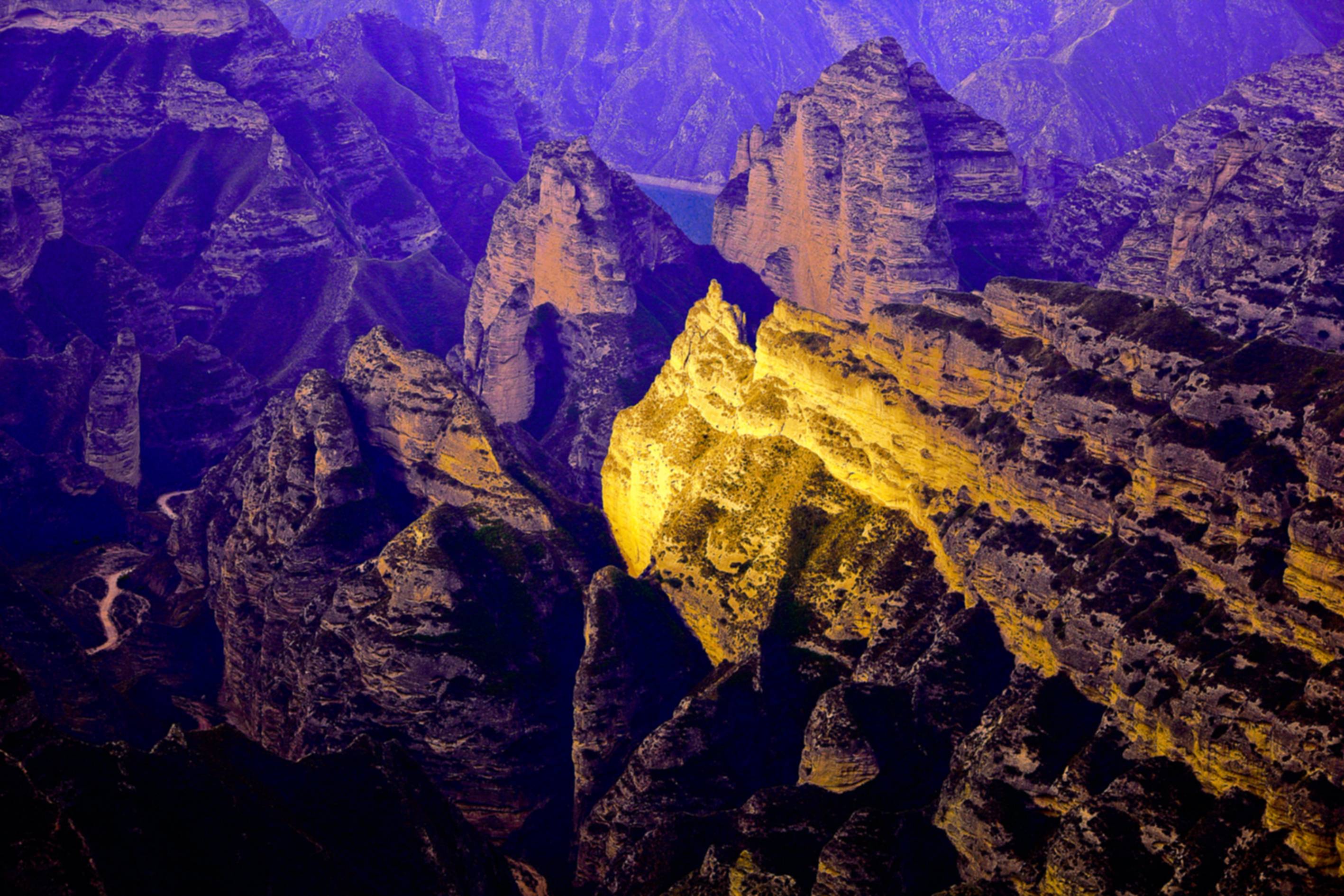
地址:甘肃省临夏回族自治州临夏市红园街道红园新村路北八巷24号
Address:NO. No.24 Hongyuanxincun Road North 8th Alley Gansu Linxia Linxia
地层:地质公园范围零星出露有古元古代马衔山岩群(Pt1M.)、古生代奥陶纪雾宿山群(Ow)、晚三叠世南营儿组(T3n)地层,在地质公园北边大面积出露的早白垩世河口群(K1H),由一套河湖相的紫红色砂砾岩组成,该套地层在炳灵寺周边被切割侵蚀形成了丹霞地貌;古近纪(E)和新近纪(N)地层主要分布在地质公园中偏南部,这套地层沉积连续且厚度大,岩性主要为紫红色、褐黄色砂砾岩、泥岩等,是和政古动物化石群的重要产出地层。第四纪(Q)地层在地质公园广泛分布,其中下更新统地层中含有真马动物群化石,该动物群是和政四大古动物群之一,上更新统的风成黄土广布山坡上,被侵蚀切割形成黄土塬、黄土卯等地貌;全新统的多分布山间沟谷之中,以冲积物为主。 变质岩:地质公园内变质岩发育于古元古代马衔山岩群(Pt1M.)地层中,主要岩石类型为石英片岩、黑云斜长片麻岩、斜长角闪岩和方解石大理岩。 状基本水平,构造变形总体上不明显。但盆地西南部由于受积石山断裂和西秦岭北缘断裂的控制和影响,自大约 8 百万年前开始由西向东向盆地内部扩展,形成一个北北西向的不对称背斜构造,背斜东翼发育生长地层和生长不整合,记录了青藏高原向北东方向的扩展过程。 经历了晚渐新世巨犀动物群、中中新世铲齿象动物群、晚中新世三趾马动物群三个阶段。从上新世中期开始,青藏高原快速隆升,该区出现挤压、掀斜的构造变形。从第四纪的早更新世开始,该区湖泊逐渐消亡,黄河开始出现,早更新世真马动物群开始繁盛。但随着第四纪气候的频繁波动,真马动物群灭绝,至晚更新世晚期,该区沉积大面积的风积黄土;全新世以后,气候转暖,大量古人类在这里生存,留下了众多文化遗存。
Linxia UNESCO Global Geopark is located on the east side of the Taizishan fold fault zone in the northern part of the West Qinling block, on the southern edge of the Tianshui-Linxia fault basin. The geological formation and structure in the area are relatively simple.Metamorphic rocks: The metamorphic rocks in the geopark are developed in the Paleoproterozoic strata and the strata are the Maxianshan Group (Pt1M.). The main rock types are quartz schist, biotite plagioclase gneiss, amphibolite and calcite marble.Geological development history: The geological history of the geopark can be traced back to the Proterozoic more than 2 billion years. But the most significant is the period of earth history since the Cretaceous. During the Cretaceous, this area has evolved into an inland basin, forming very thick fluvial and lacustrine deposits, namely the Hekou group in the geopark. The Yanshan Movement at the end of the Late Cretaceous terminated the sedimentation history of the Cretaceous and caused widespread deformation of the Cretaceous red beds, forming relatively wide folds, thrust faults in the basin margin, intra-basin reverse and normal faults. As a result, the Paleocene-Eocene Xiliugou Formation overlies the Lower Cretaceous Hekou group in angular unconformity. The Cenozoic development history of the geopark is the evolution history of the 5 Linxia Basin and of the mammals. In the Paleogene, the climate is hot and dry, the Paleogene-Eocene strata is a set of maroon continental clastic rocks; in the Eocene-Oligocene, the With the frequent fluctuations of the Quaternary climate, the equus fauna was extinct. By the late Pleistocene, a large area of aeolian loess was deposited in the geopark; as the climate got warmed after the last glacial period, a great deal of ancient humans lived here, left many ancient human cultural sites.

